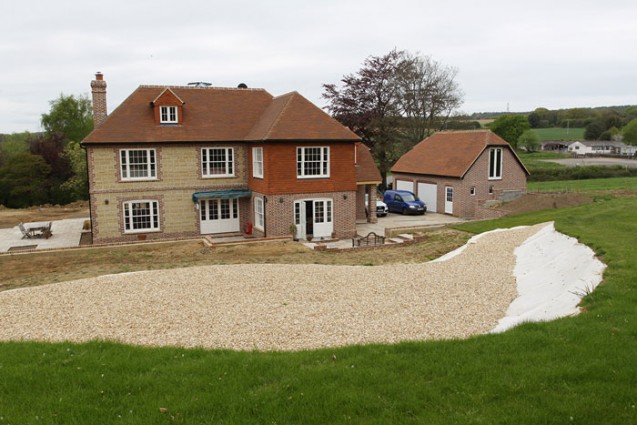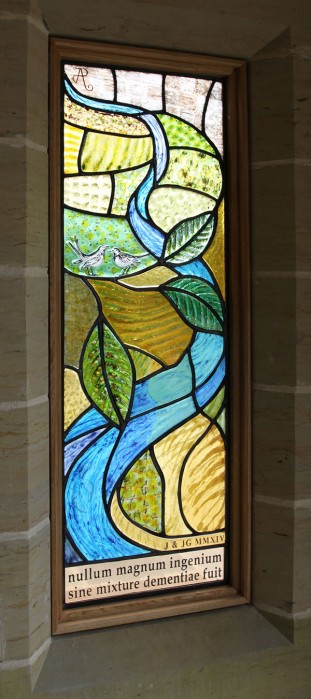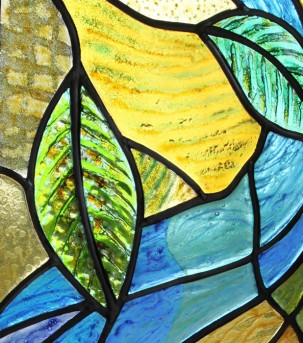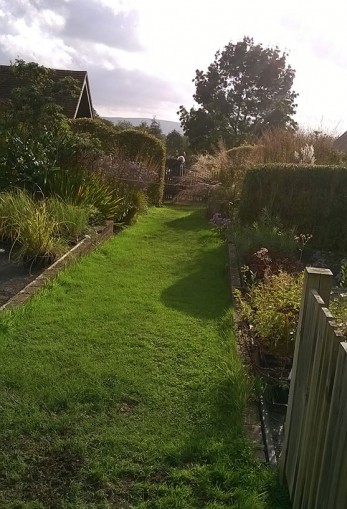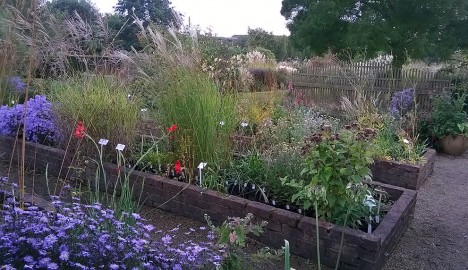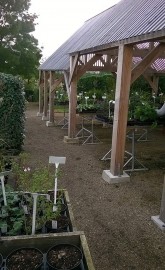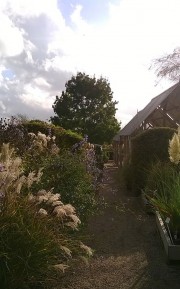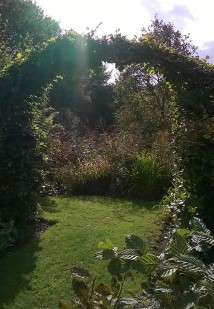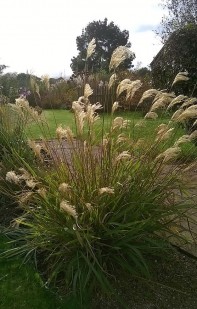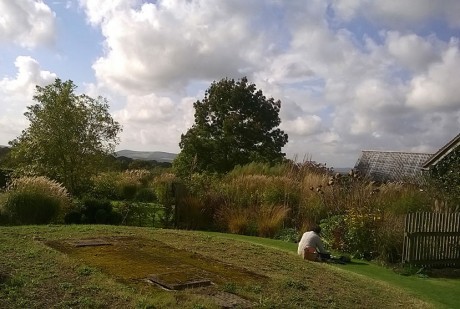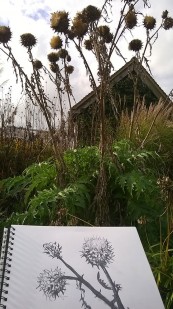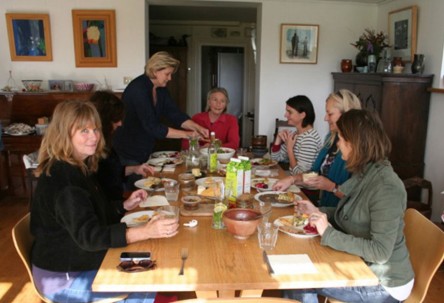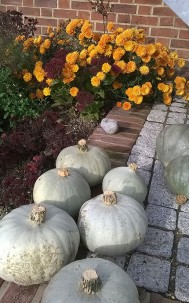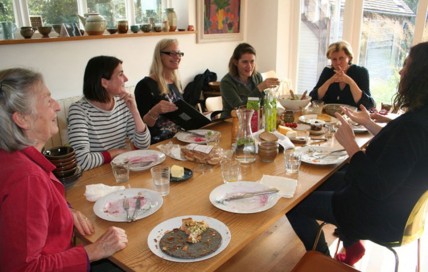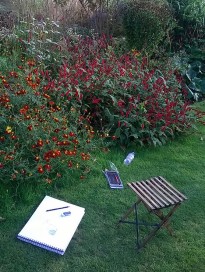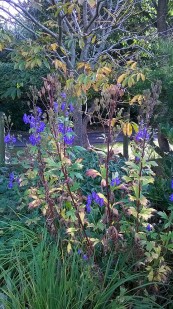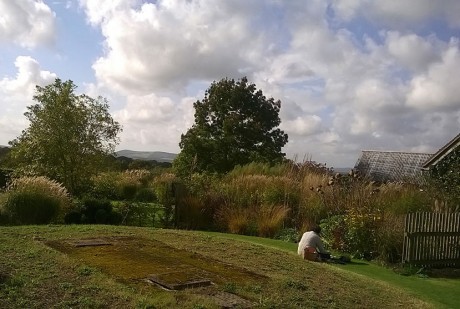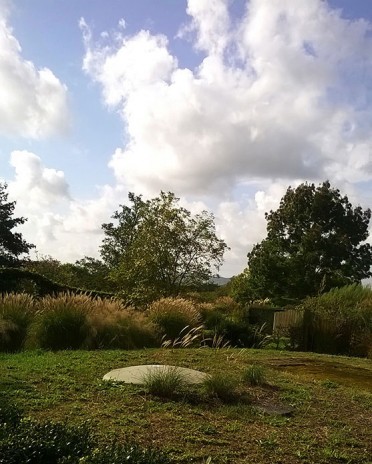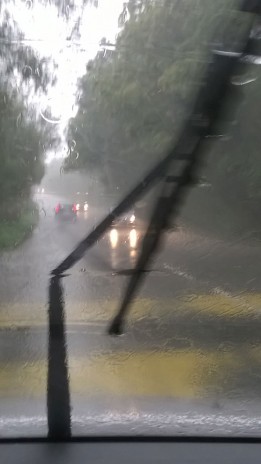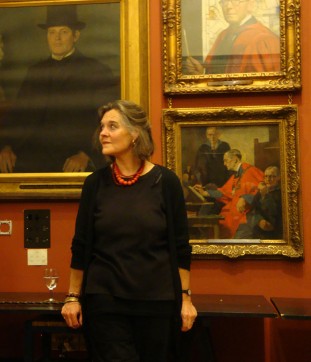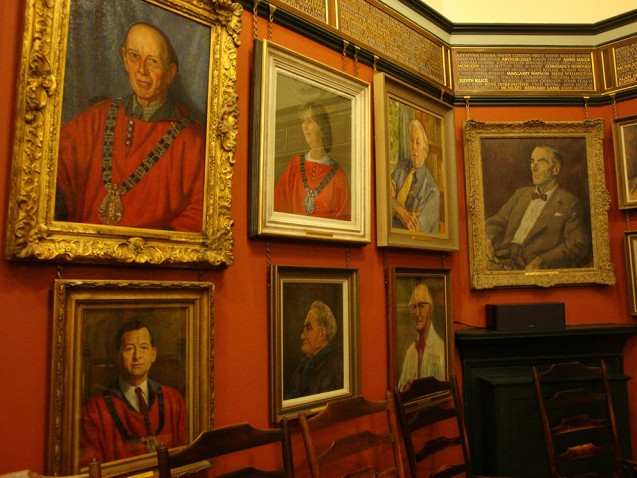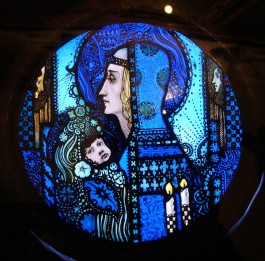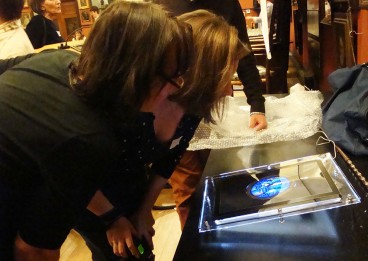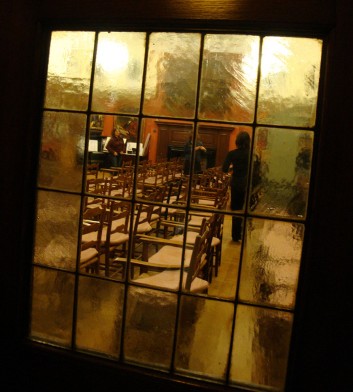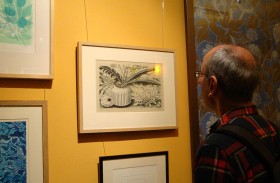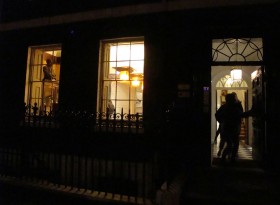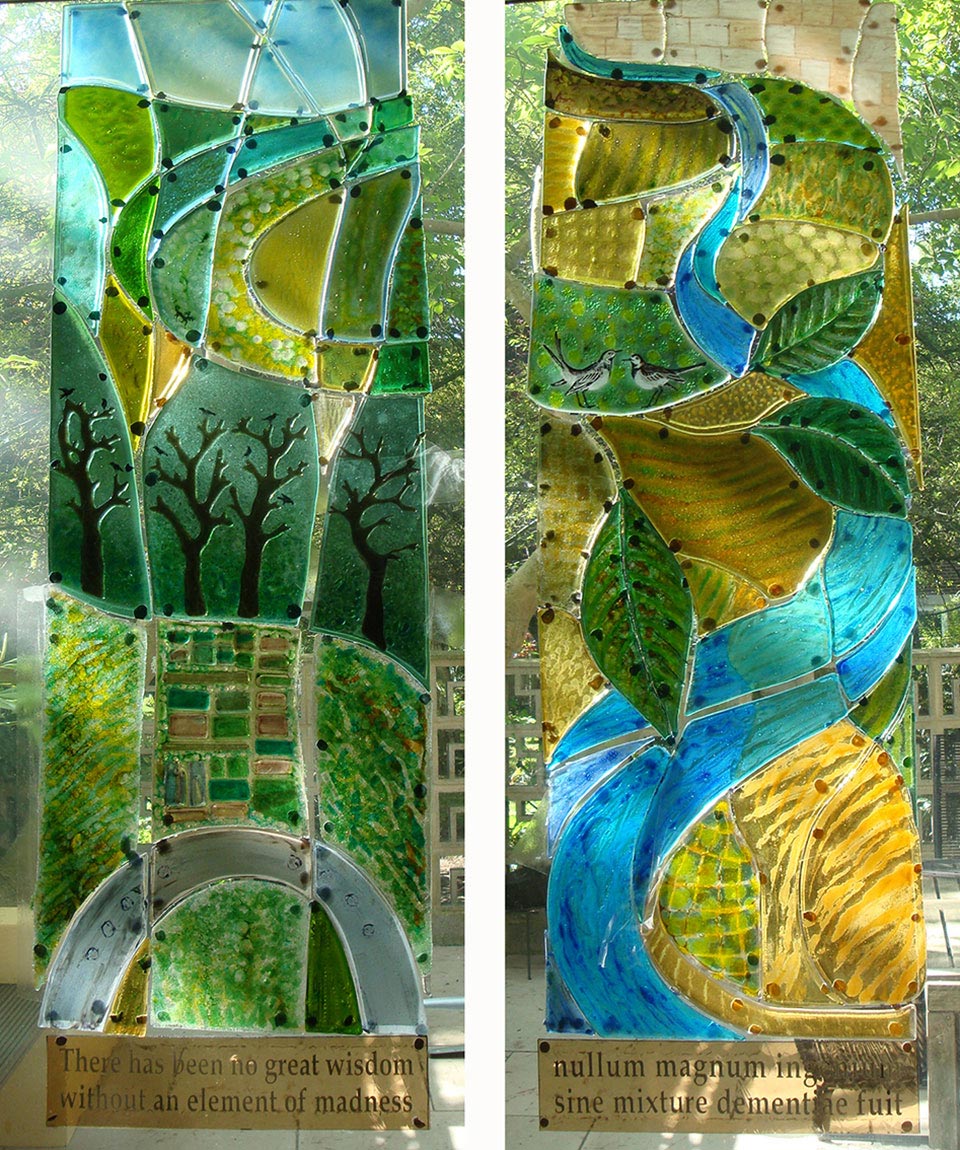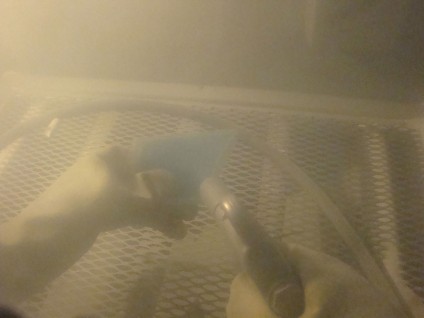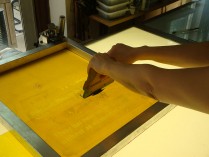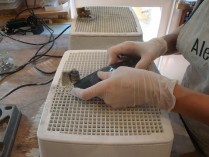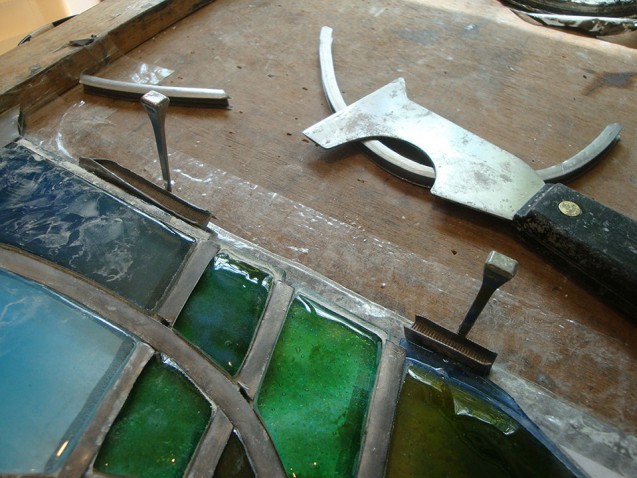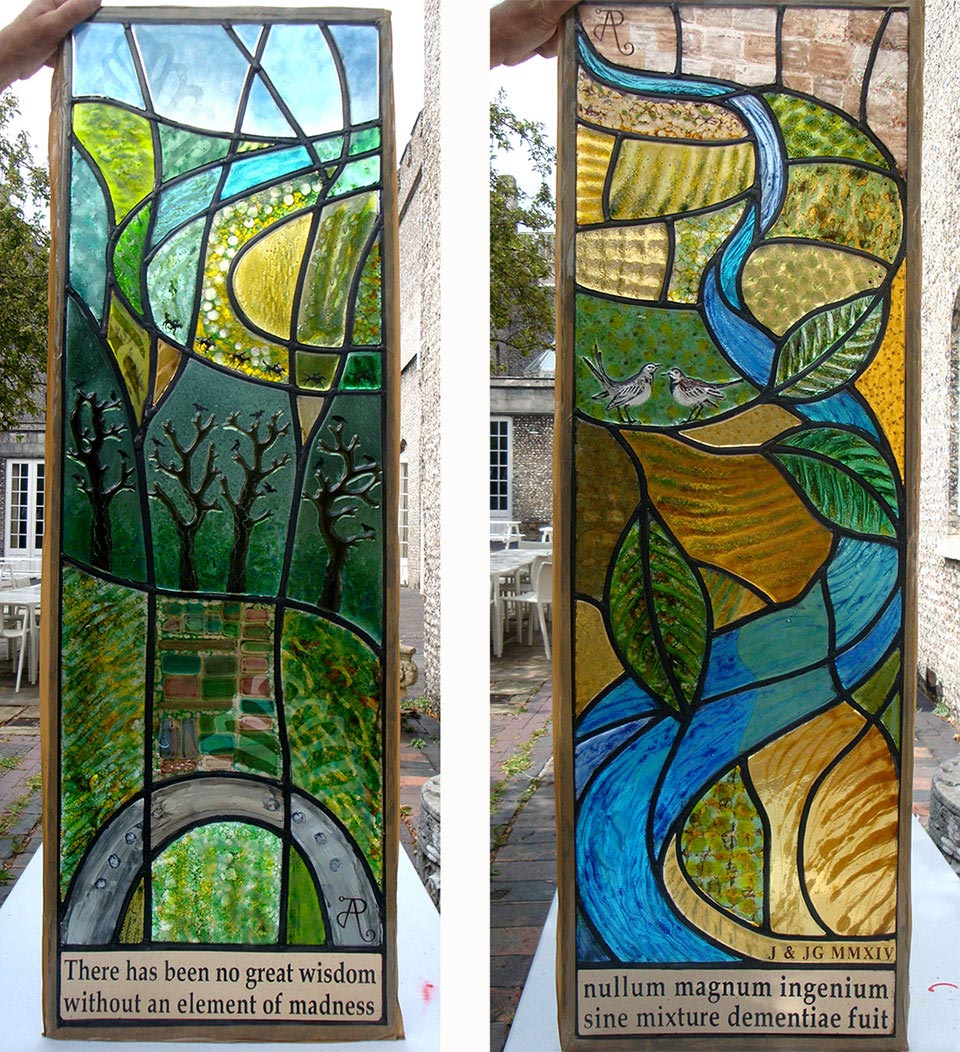I spent a wonderful day yesterday with a drawing group in a beautiful garden and nursery near Lewes. We were planning on sketching outside all day and despite overnight rain, the morning light on the drive down was very promising. By the time I arrived, the gardens were bathed in a gorgeous autumnal light and we were rather pleased with ourselves for having chosen the perfect day for it.
Marchants Nursery and Garden in Laughton, East Sussex, is one of the leading small nurseries in the country attached to a beautifully kept garden with stunning views of the South Downs. Owned by Lucy Goffin – one of the ladies in the drawing group – and her husband Graham Gough, the garden at Marchants was the perfect spot to sketch and paint.
At every turn there were plants and flowers, creating a maze like walk through the centre of the gardens, paths lined with planting and a general movement down the garden leading visitors towards a large pond at the end of the plot. Everything was well kept without being fussy, and you could tell that this was a garden created with love. Further up towards the house, one got a longer vista across the gardens and beyond. After a morning’s work we came back together inside. As if by magic, another fantastic spread was created from dishes brought by various members of the group and we had our post lunch cups of tea from the balcony outside the lovely first floor studio.
Of course with eight creative women involved, lunch and a cup of tea is no quick affair! Those of us who hadn’t seen Lucy’s studio were curious, and Lucy obliged by inviting us in to see the studio and her work. She is a textile artist and she draws greatly on the nature surrounding her, with plants from her garden often being depicted in her textiles designs. It was all so inspiring, let alone the incredible views across the South Downs from her balcony. But alas the afternoon felt as though it was already half gone, before we got back to work, and far too soon I had to jump back in the car to make my way back to London for an evening lecture. And so I left Marchants at about 4 o’clock, marvelling that I had spent an entire October day in lovely autumnal sunshine in barely more than a thin jacket.
And then the heavens opened! The two photographs above were taken 20 minutes apart! I had left myself enough time to get back on a good day, but I’d forgotten the Friday afternoon traffic and I certainly had not counted on such appalling weather conditions that the A22 was literally turned into a river. That, plus the typical English signposting which sent me twice around a standstill traffic jam on the East Grinstead ringroad before I realised I would have to retrace my steps back. After two hours in the car, I had gone only 35 miles of my journey and had practically given up on getting back in time for the lecture which was to start in 45 minutes.
But driving through Sevenoaks I had an inspired moment! I parked in the station car park, jumped on the first train to London Bridge (which thankfully turned out to be the fast train), had a couple of crowded tube rides in London rush hour and then sprinted from Holborn tube to make it just in time to Queen Square to grab a glass of wine and a seat for the lecture.
And I am so glad I made the effort, as the lecture was superb. Dr Nicola Gordon Bowe spoke with verve and passion about one of my all time stained glass favourites, Harry Clarke. He was a remarkable Arts and Crafts artist working in Dublin from about 1910. He produced book illustrations and taught graphics at the Dublin School of Art, but it is his idiosyncratic stained glass for which he is remembered best. He was prolific and produced an unbelievable number of outstanding works during his relatively short career which was cut short by his early death in 1931 from – what sounded like – over work.
After the lecture, we were so excited to have the opportunity to look closely at a Harry Clarke glass panel, which demonstrated his unbelievable, almost microscopic, painting technique. There is always more to find in Harry Clarke’s work – little faces, small details, tiny inscriptions and his almost hidden signature. I think his work is also strangely timeless – it has an Arts and Crafts sensibility but it looks like it could have been created by a modern master. Even better, I love that his work also often looks like it could have been painted by a woman – it has such a feminine aesthetic and the decorative detail is mindblowing. But, as we found out, he also had a taste for sauciness in some of his pieces and the good citizens of Dublin were affronted on more than one occasion by his depictions in glass.
We stayed for a meal at the Art Workers’ Guild and I was delighted to spot an Angie Lewin print on the walls – someone else whose work has lovely decorative detail and is also an old friend from my Central Saint Martins days. We were chatting away and ended up being the last people out of the building. On my way back to the tube I remembered with a sinking heart that I’d have to train it back out to Sevenoaks before making the long midnight drive back home.
